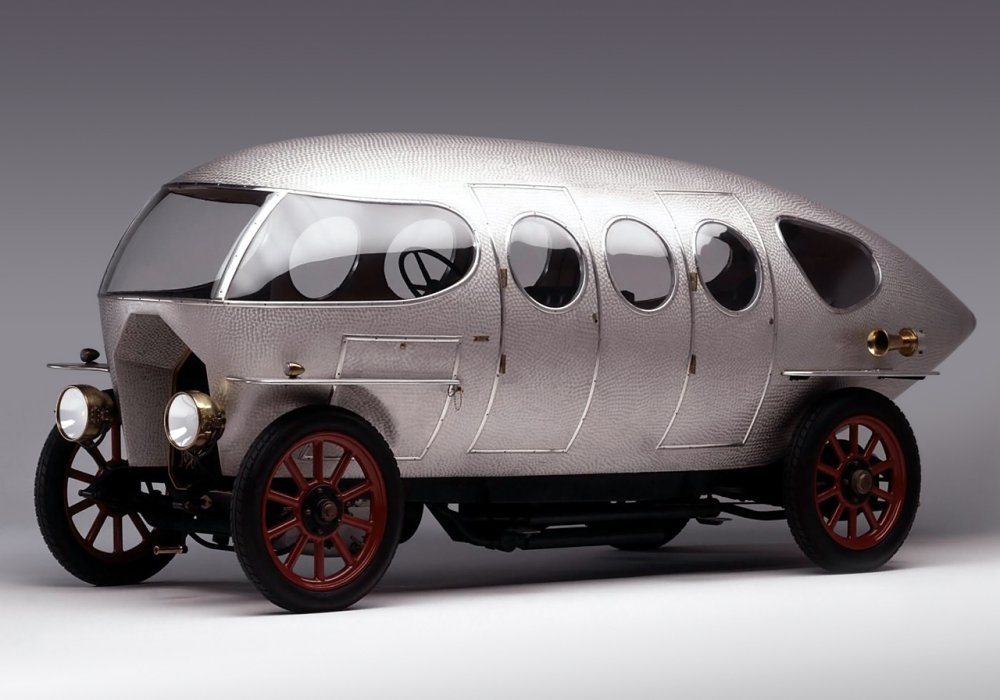In the dawn of automotive history, when most cars were still essentially motorized carriages, one vehicle dared to challenge conventional design. The Alfa 40-60 HP Aerodinamica emerged as a testament to human ingenuity, blending aviation principles with automotive engineering in ways never before attempted.
The year 1914 marked a pivotal moment in transportation history. While Europe stood on the brink of war, a small team of visionaries in Milan was quietly revolutionizing the future of automotive design. Their creation would become not just a car, but a blueprint for automotive aerodynamics.
Fact!
The Alfa 40-60 HP Aerodinamica achieved a remarkable speed of 139 km/h in 1914, surpassing many aircraft of its era.
The Birth of an Aerodynamic Marvel
The story begins with Count Marco Ricotti, a Milanese aristocrat whose vision extended far beyond the conventional automobiles of his time. Collaborating with the prestigious Carrozzeria Castagna, Ricotti commissioned a vehicle that would challenge every established norm of automotive design.
The project started with the robust chassis of an A.L.F.A. 40/60 HP, but its true innovation lay in the revolutionary body design. Chief engineer Giuseppe Merosi believed that aviation principles could transform automotive performance, a radical concept for 1914.
“The Aerodinamica wasn’t just a car — it was a philosophical statement about the future of transportation,” notes Dr. Elena Romano, Automotive History Professor at the University of Milan. “It represented a complete paradigm shift in how we approached vehicle design.”
The collaboration between Ricotti’s vision and Merosi’s engineering expertise produced something unprecedented: a teardrop-shaped automobile that looked more like a creature from science fiction than a pre-WWI vehicle.
Historical Reference!
When the Aerodinamica was unveiled, most automobiles still maintained the boxy, carriage-like designs of the previous century. Its streamlined form was so revolutionary that many initially dismissed it as impractical.
Revolutionary Design & Engineering
At the heart of the Aerodinamica beat a powerful 6,082cc four-cylinder engine, producing 70 horsepower at 2,200 rpm. However, it was the car’s aerodynamic efficiency that truly set it apart. Key innovations included:
- pioneering use of wind tunnel principles in automotive design;
- revolutionary aluminum body construction for weight reduction;
- integrated fenders and smooth underbody for reduced drag;
- streamlined cabin design eliminating sharp edges;
- optimized weight distribution for high-speed stability.
The engineering team’s attention to aerodynamic detail was unprecedented. Every curve and contour was purposefully designed to minimize air resistance, resulting in a drag coefficient that wouldn’t be matched by production cars for decades.
Important!
The Aerodinamica's aluminum body construction was a revolutionary choice in 1914, predating widespread automotive use of lightweight materials by several decades.
Legacy and Historical Impact
The Aerodinamica’s influence extends far beyond its singular production. Its design principles laid the groundwork for modern automotive aerodynamics, introducing concepts that wouldn’t become mainstream until the 1930s.
“Looking at the Aerodinamica today, we see the genesis of principles that define modern automotive design,” explains James Mitchell, Curator of the International Automotive Museum. “Its influence can be traced through nearly every aerodynamic breakthrough of the 20th century.”
Despite its revolutionary design, the Aerodinamica remained a one-off prototype. Yet its impact on automotive engineering cannot be overstated. The car’s achievements influenced generations of designers and engineers.
The principles pioneered by the Aerodinamica continue to resonate in modern vehicle design, from high-performance sports cars to electric vehicles where aerodynamic efficiency is crucial for extending range.
Technical Achievement
The technical specifications of the Aerodinamica reveal its groundbreaking nature. The car’s aluminum body, revolutionary for its time, enabled it to achieve speeds of up to 139 km/h — a remarkable feat in 1914.
Engineers focused on creating a perfectly balanced machine. The weight distribution, suspension geometry, and chassis design worked in harmony with the aerodynamic body to create a vehicle that was both stable and efficient at high speeds.
Info!
The Aerodinamica's engine was mounted lower in the chassis than contemporary vehicles, contributing to improved handling and stability — a practice now standard in performance car design.
Through careful engineering and innovative design choices, the team achieved something remarkable: a car that could maintain high speeds with significantly less power than its contemporaries, thanks to its superior aerodynamics.
A Vision That Transcends Time
Looking back from 2025, the Alfa 40-60 HP Aerodinamica stands as a testament to human ingenuity and forward-thinking design. Its creation marked a moment when automotive engineering dared to dream beyond the constraints of its era.
The principles established by this remarkable vehicle continue to influence automotive design, proving that truly revolutionary ideas are timeless. As we move into an era of electric and autonomous vehicles, the Aerodinamica’s lesson about the importance of aerodynamic efficiency remains as relevant as ever.
| Pros | Cons |
|---|---|
| Revolutionary aerodynamic design that influenced future automotive development | Remained a one-off prototype without entering production |
| Pioneering use of aluminum in body construction | Complex manufacturing process for its time |
| Achieved remarkable speed capabilities for its era | Limited practical application of its design in contemporary vehicles |
| Introduced aviation principles to automotive design | Higher production costs compared to conventional vehicles |
| Established foundational concepts for modern car aerodynamics | Required specialized maintenance due to unique construction |
| Advanced engineering that was decades ahead of its time | Limited interior space due to aerodynamic design |
The Alfa 40-60 HP Aerodinamica represents more than just an innovative automobile — it embodies the spirit of innovation that drives human progress. While it may have been too advanced for its time, its influence continues to resonate in the sleek, aerodynamic vehicles that populate our roads today.

